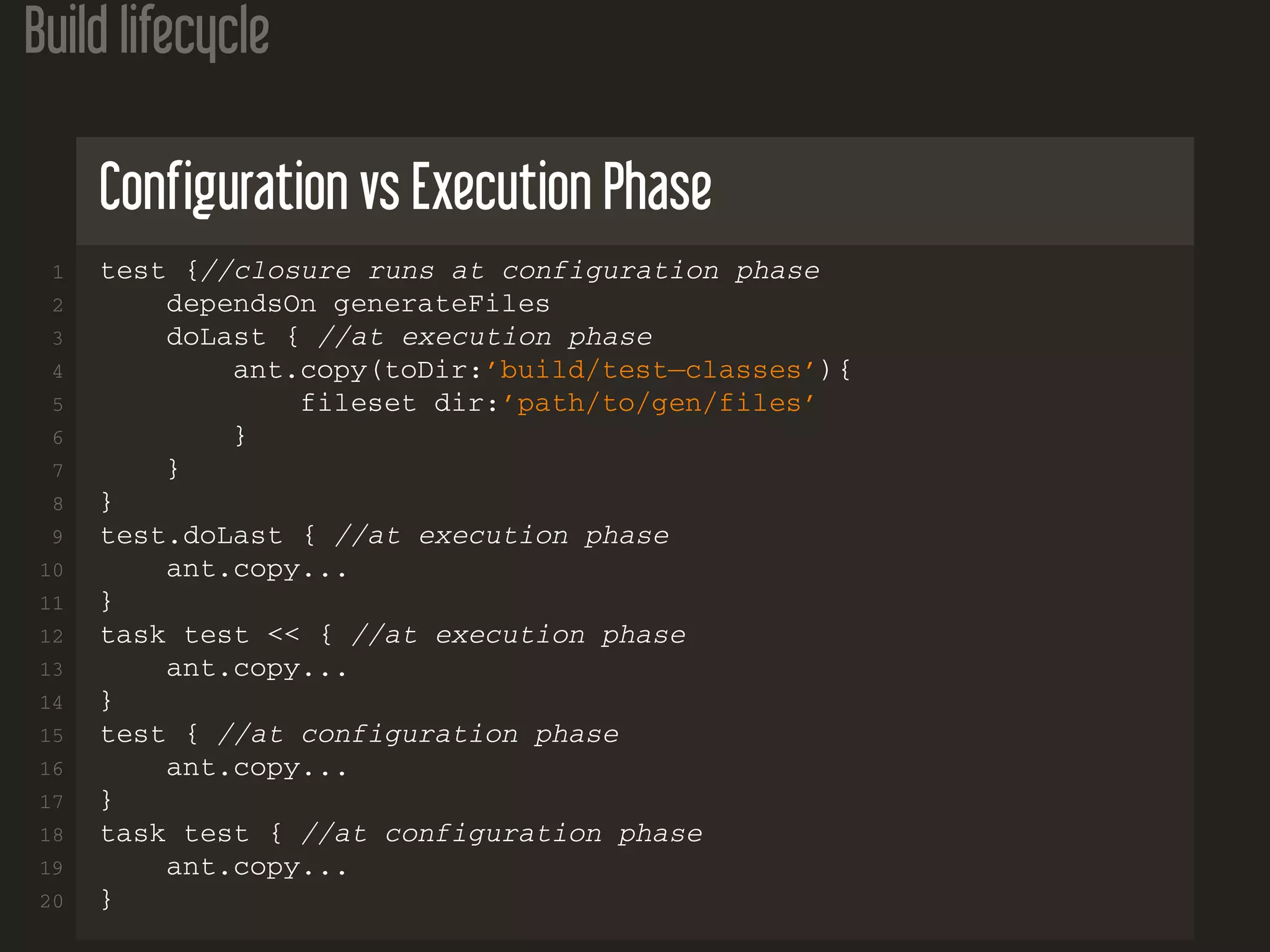This document provides an introduction to Gradle for Java developers, emphasizing its features and ease of use in software build management. It covers core concepts, such as build scripts, tasks, plugins, dependency management, and the Groovy DSL used in Gradle. The presentation is aimed at Java developers with little or no experience in Gradle, showcasing its capabilities through examples and explanations of its sophisticated design.

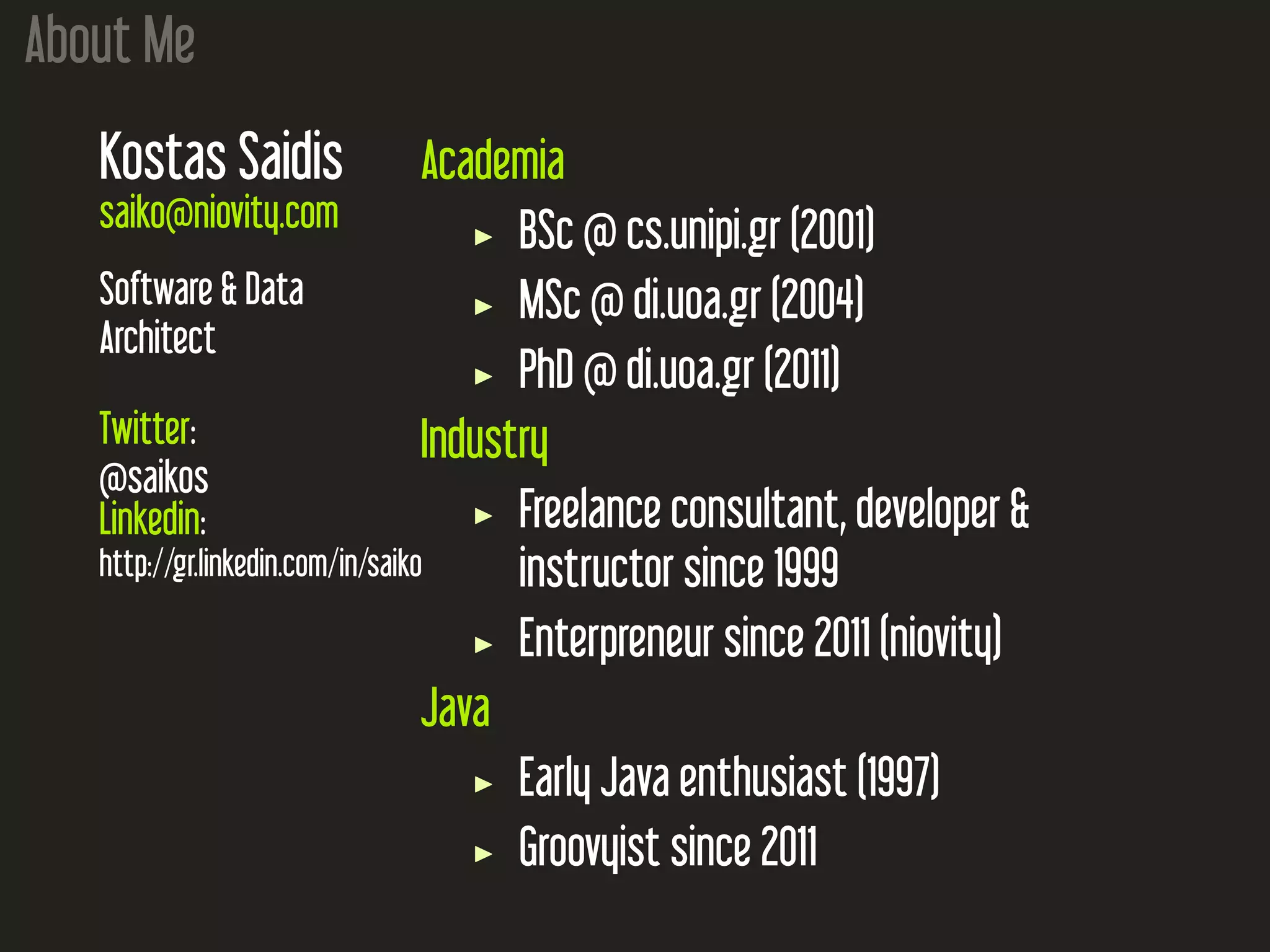
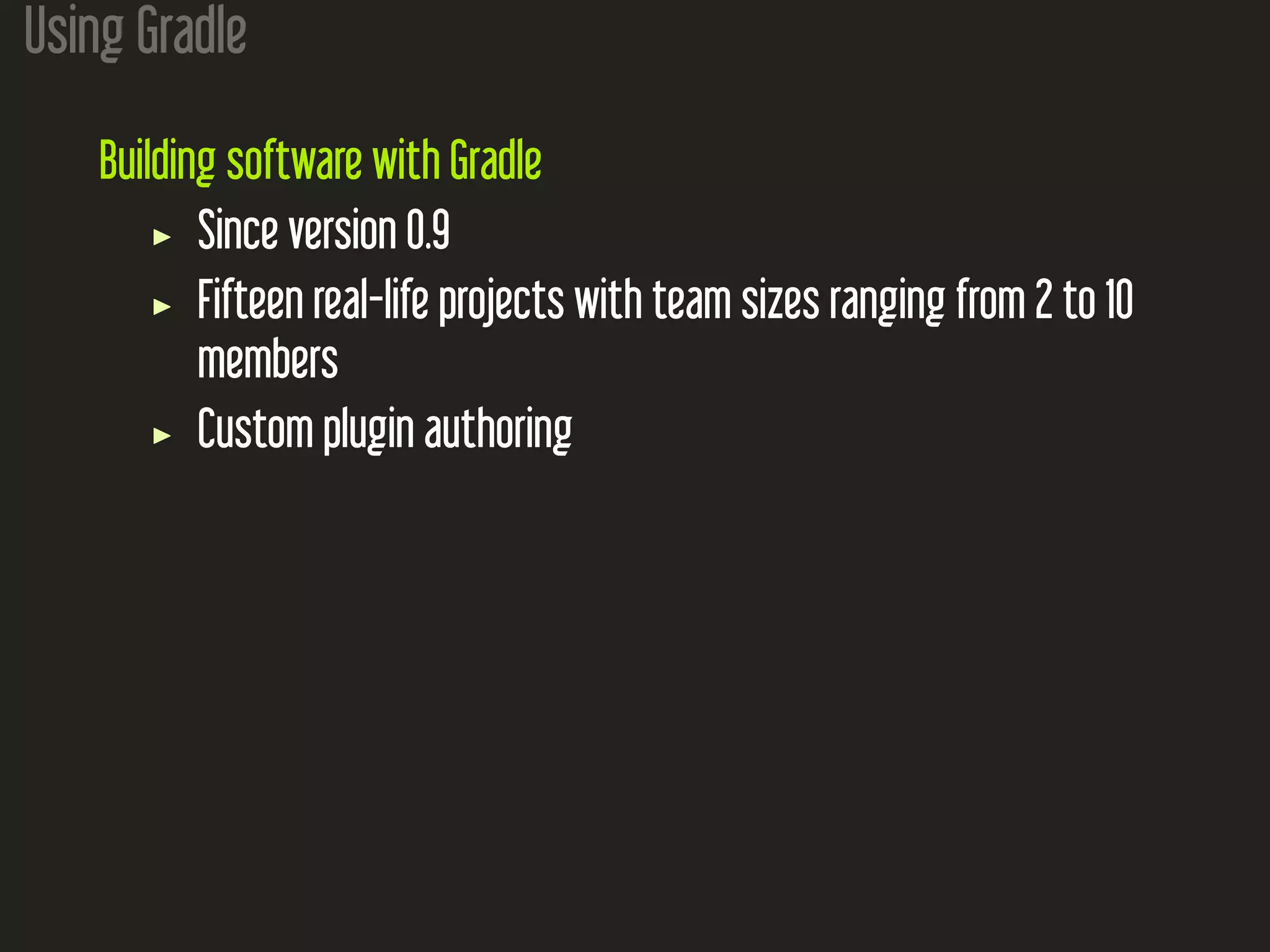
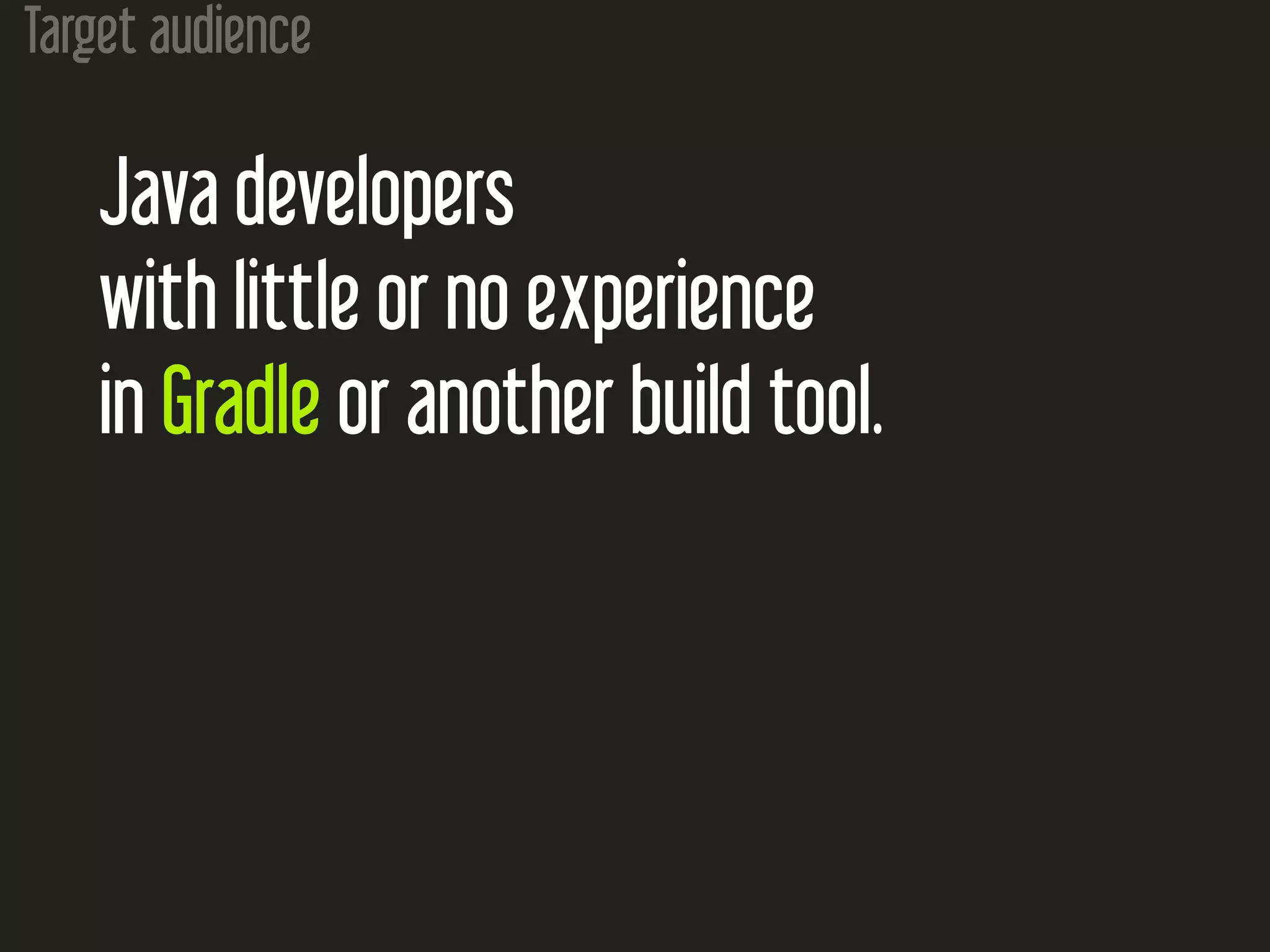

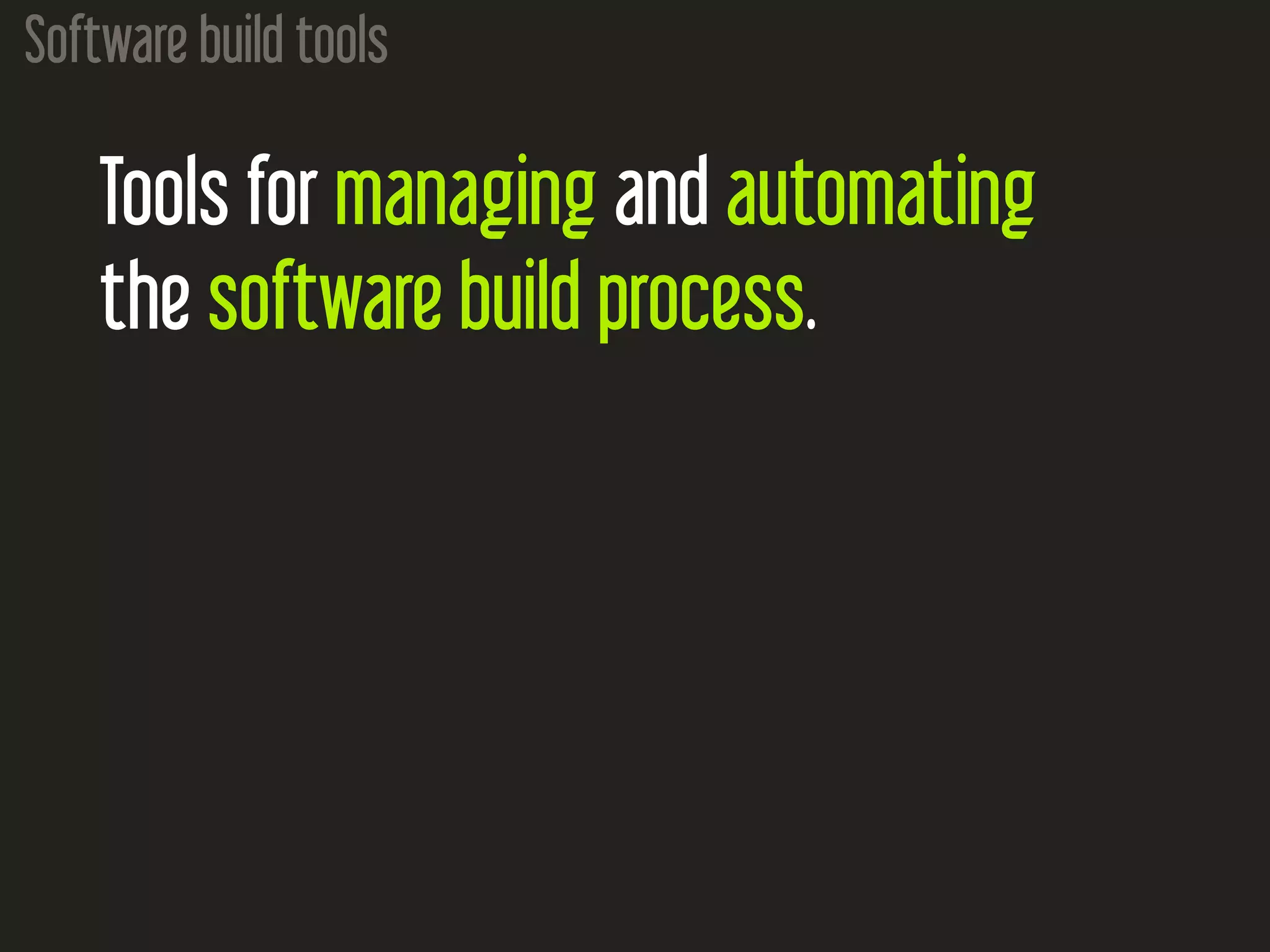
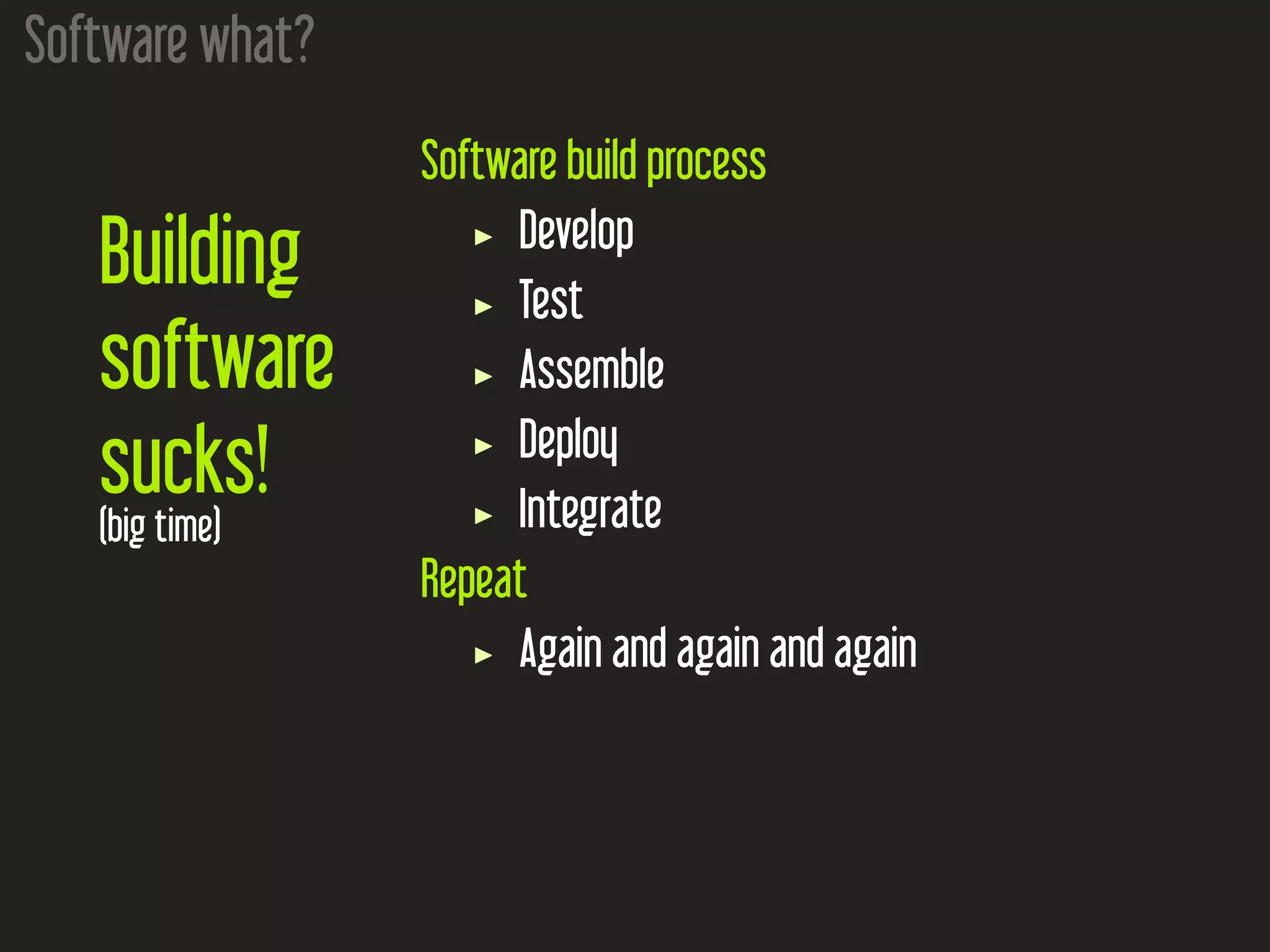
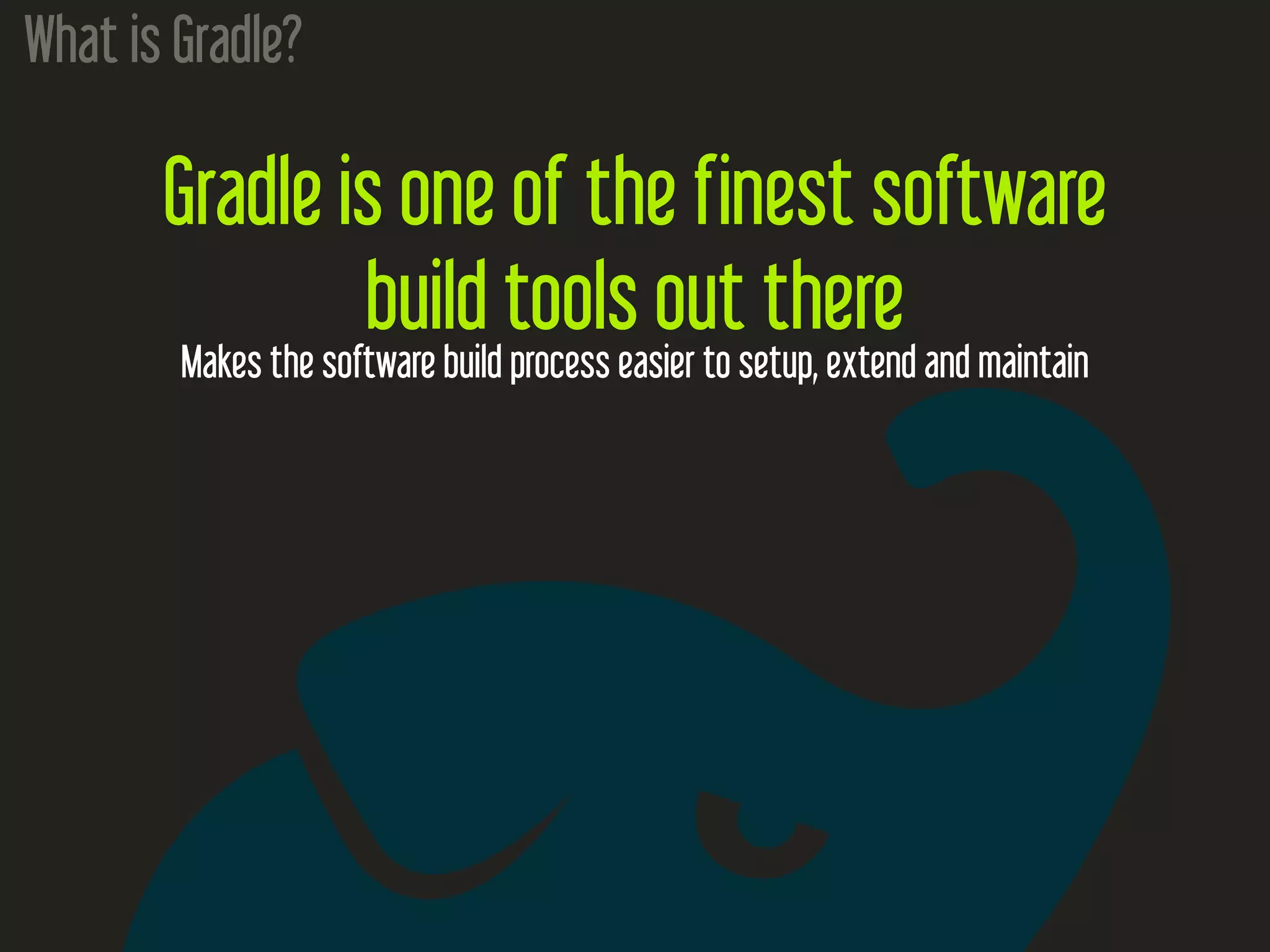
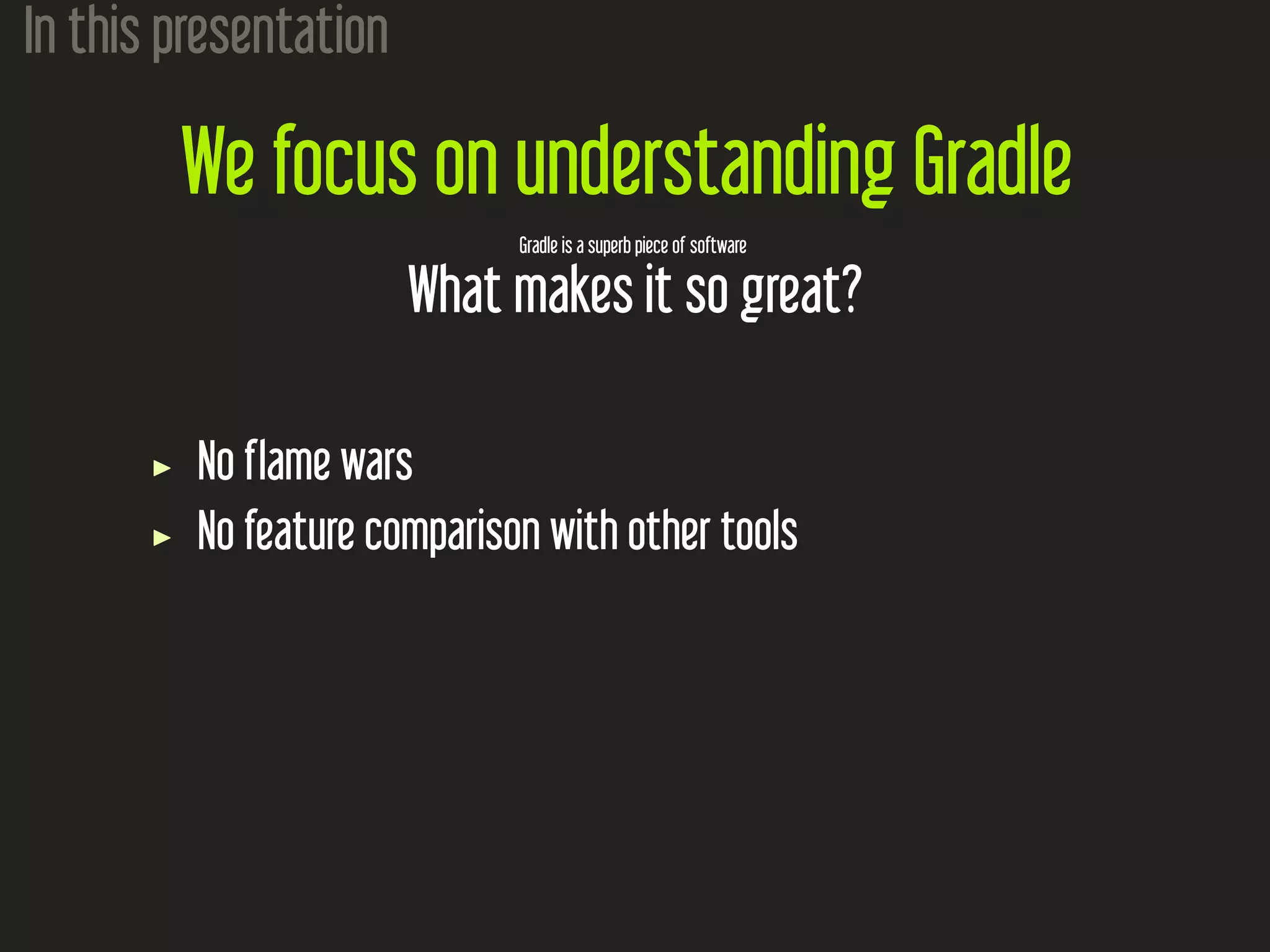
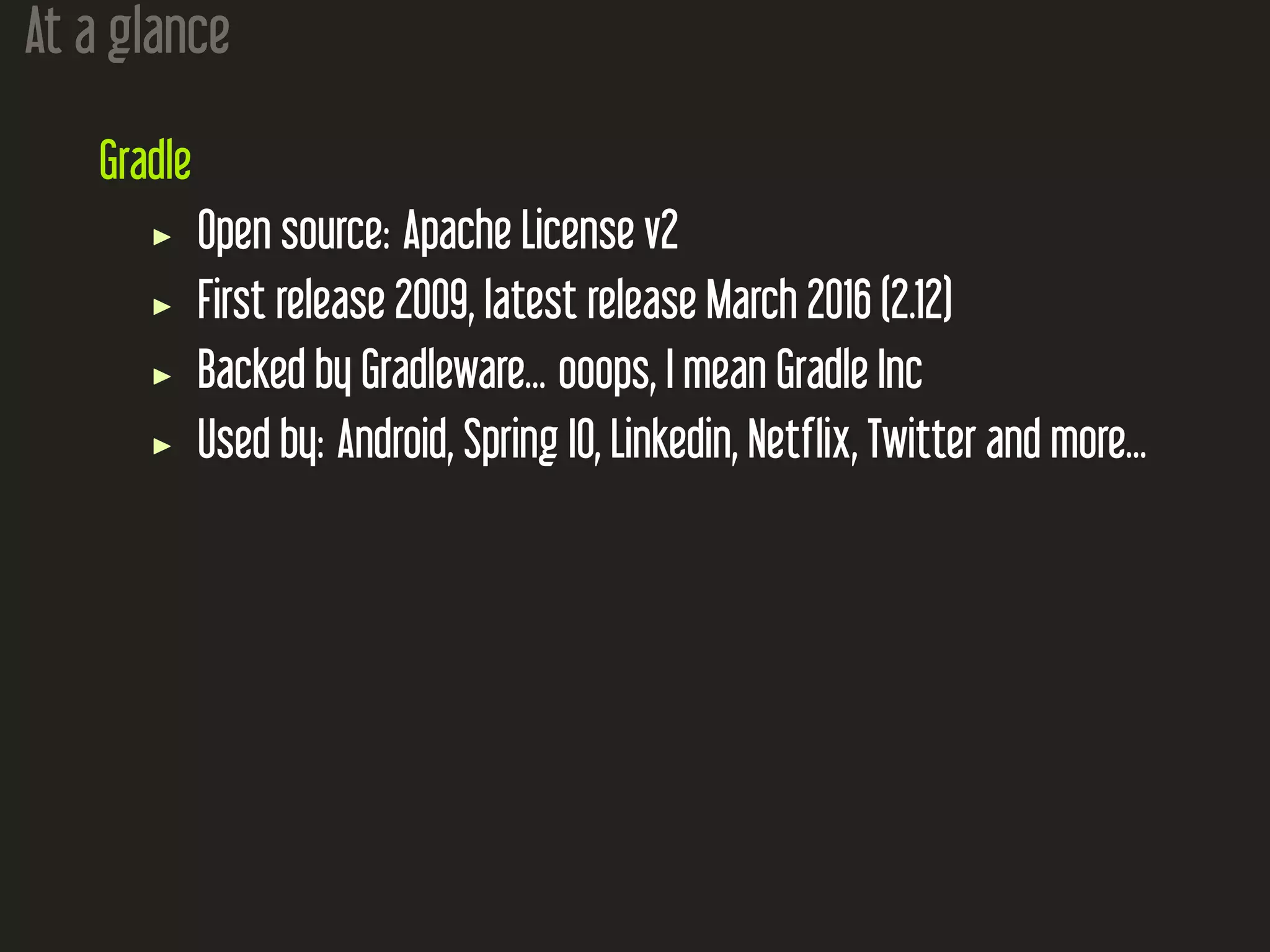
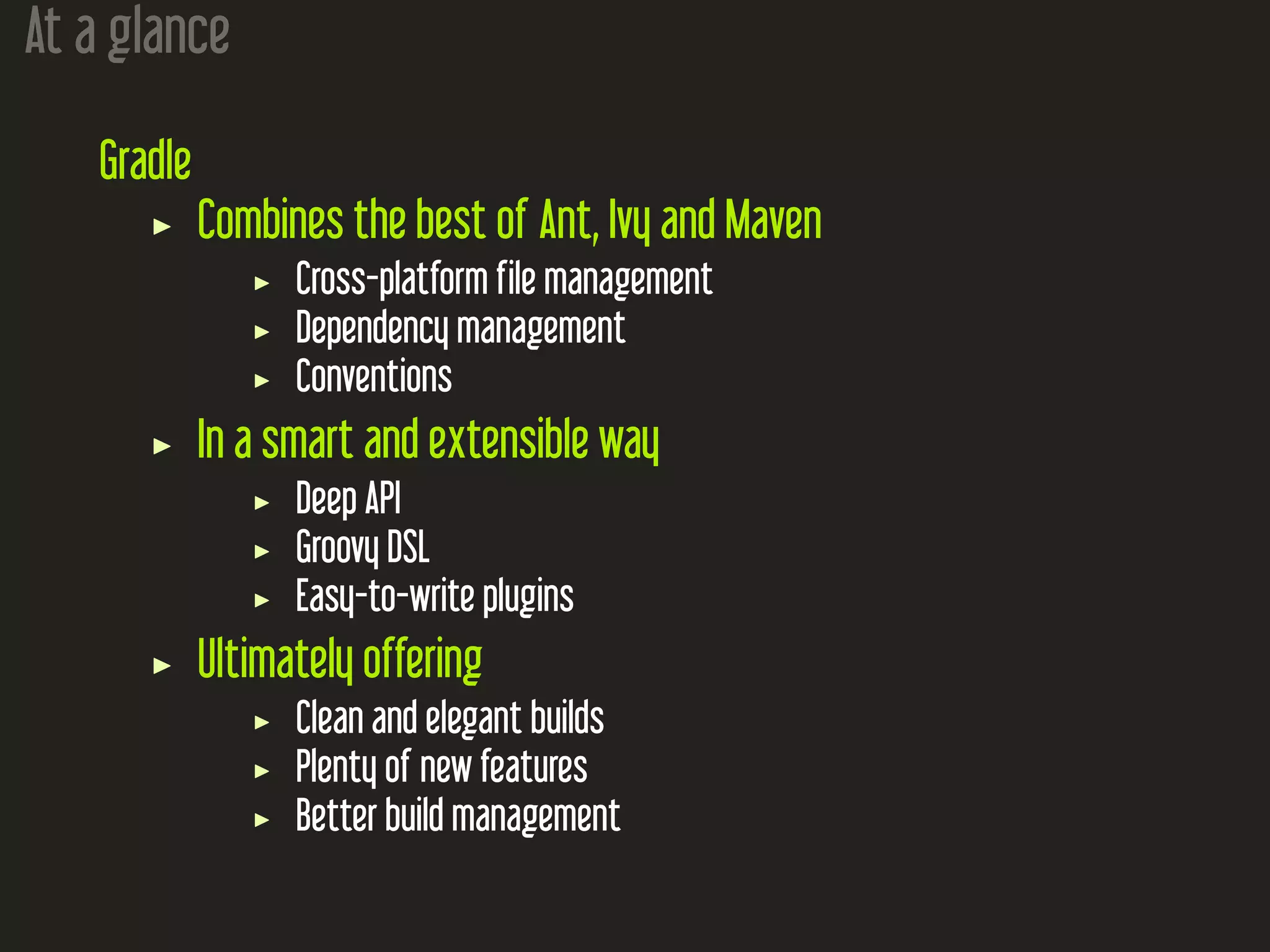
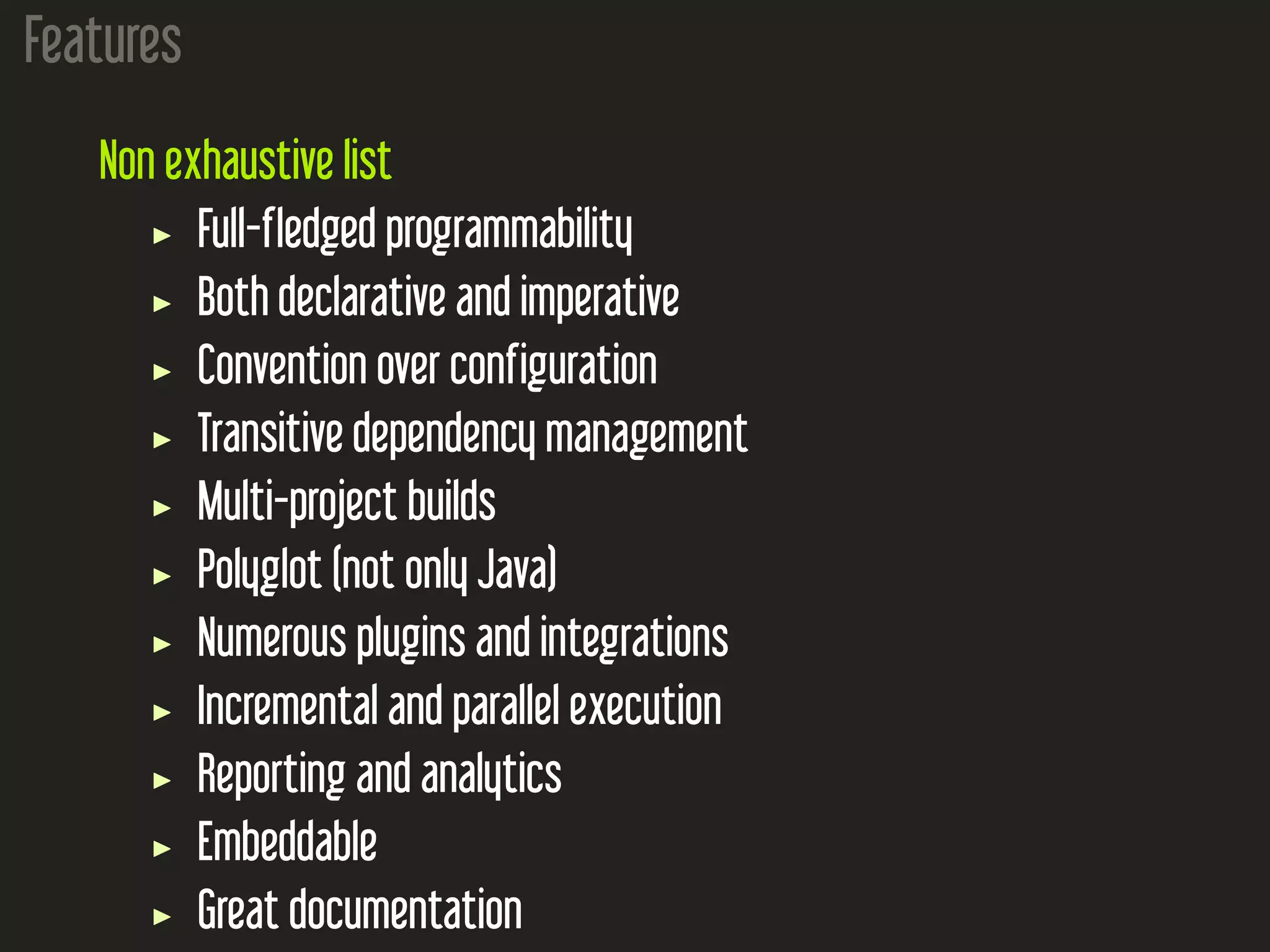
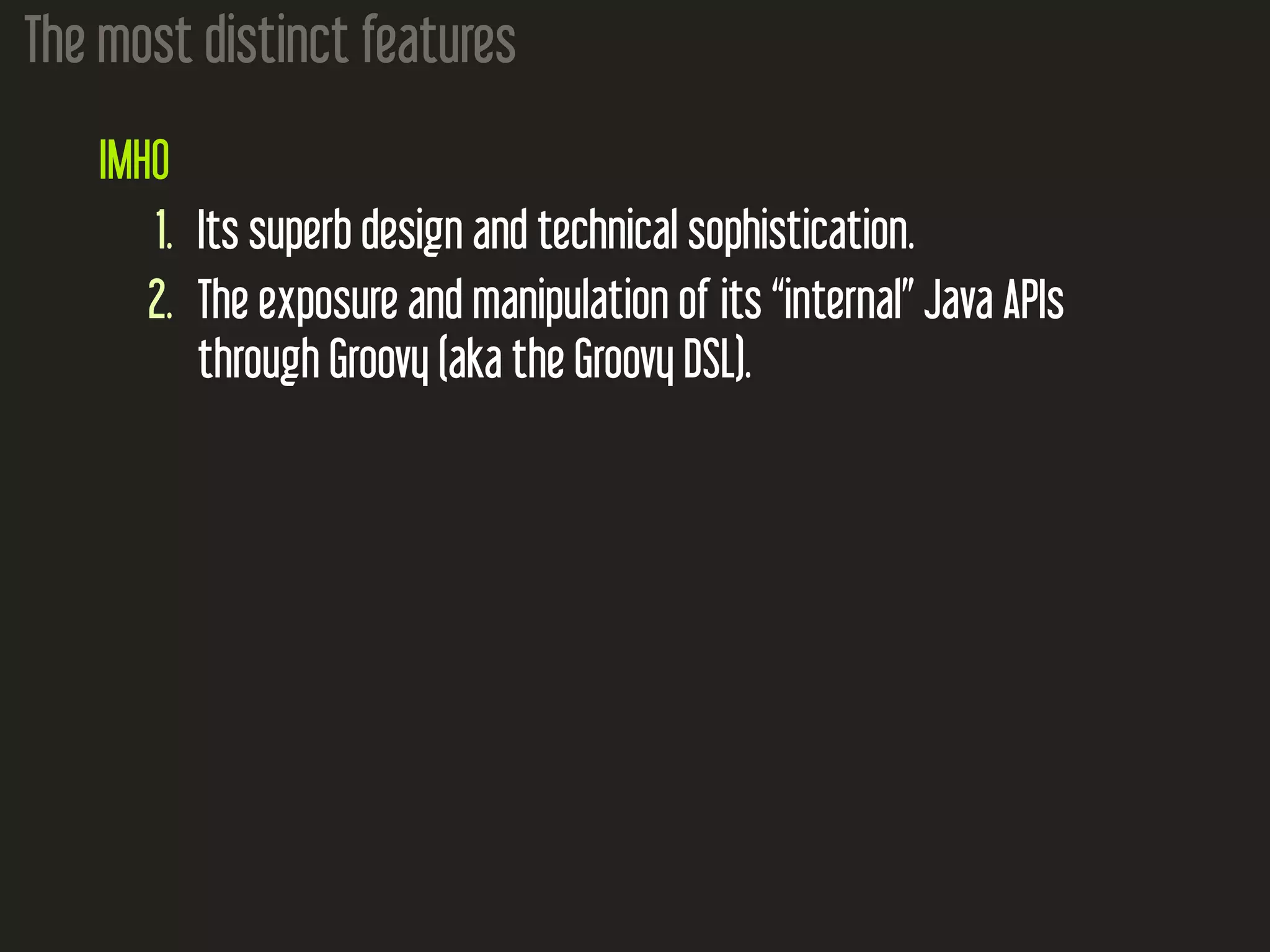
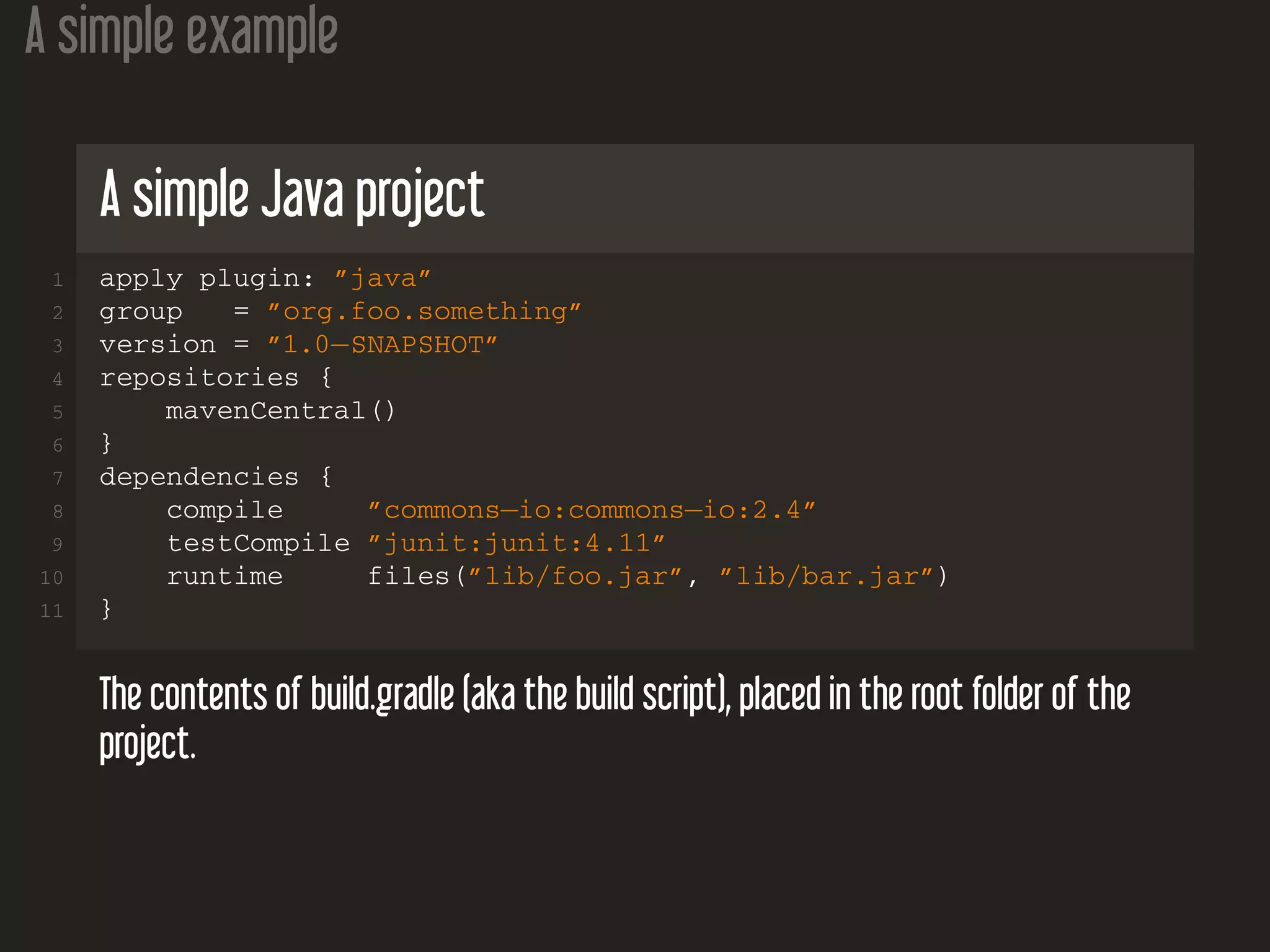
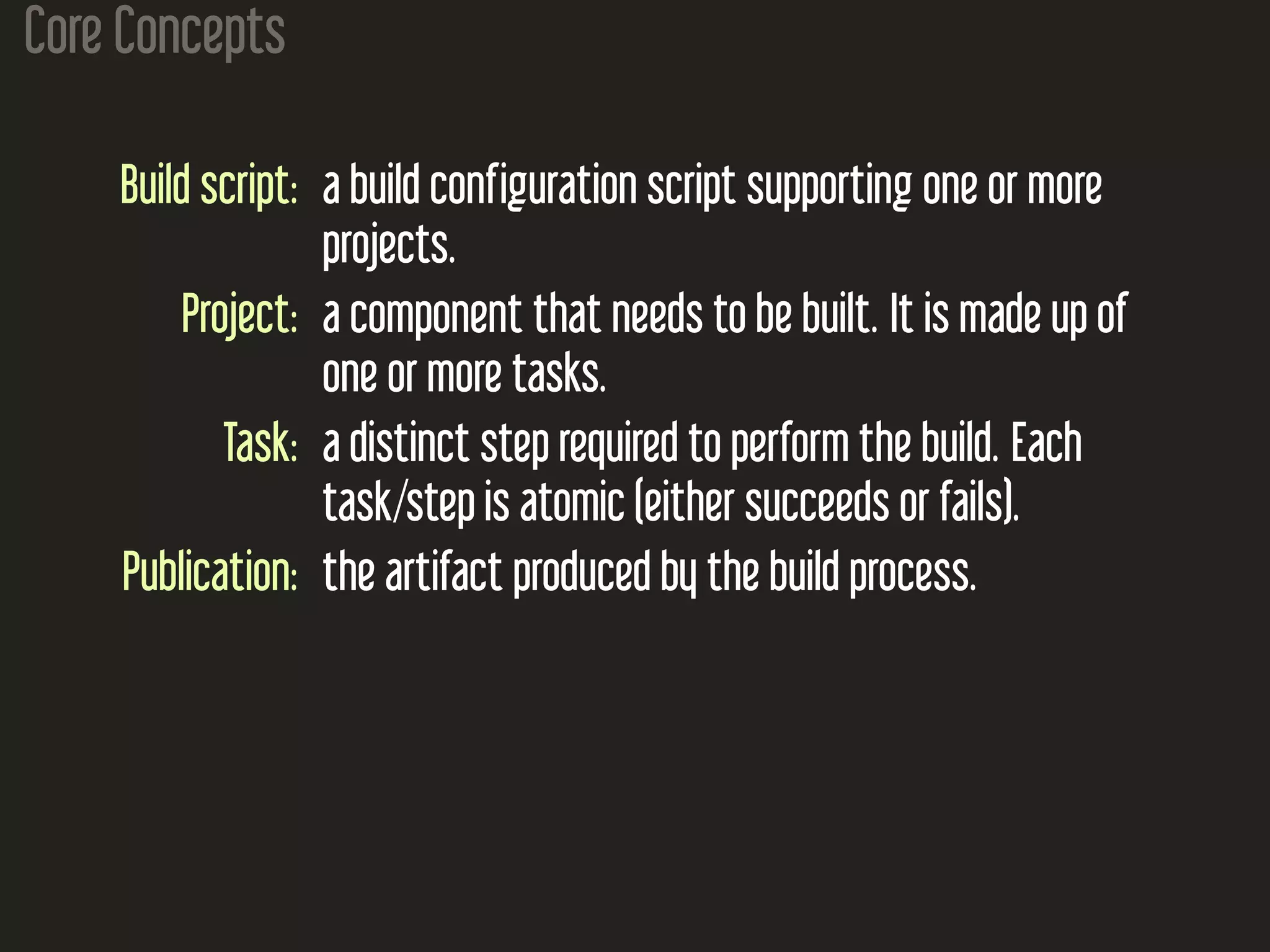
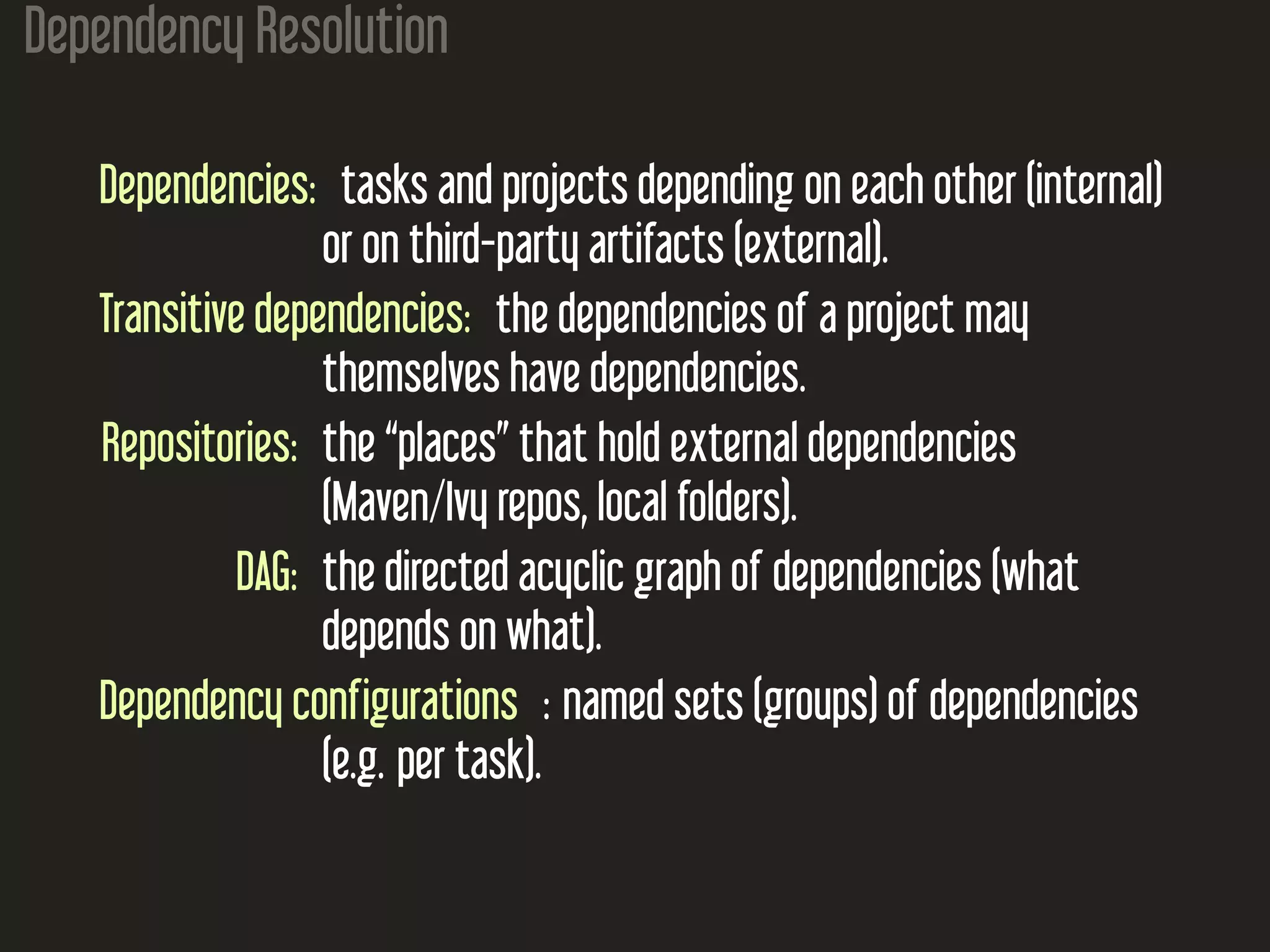
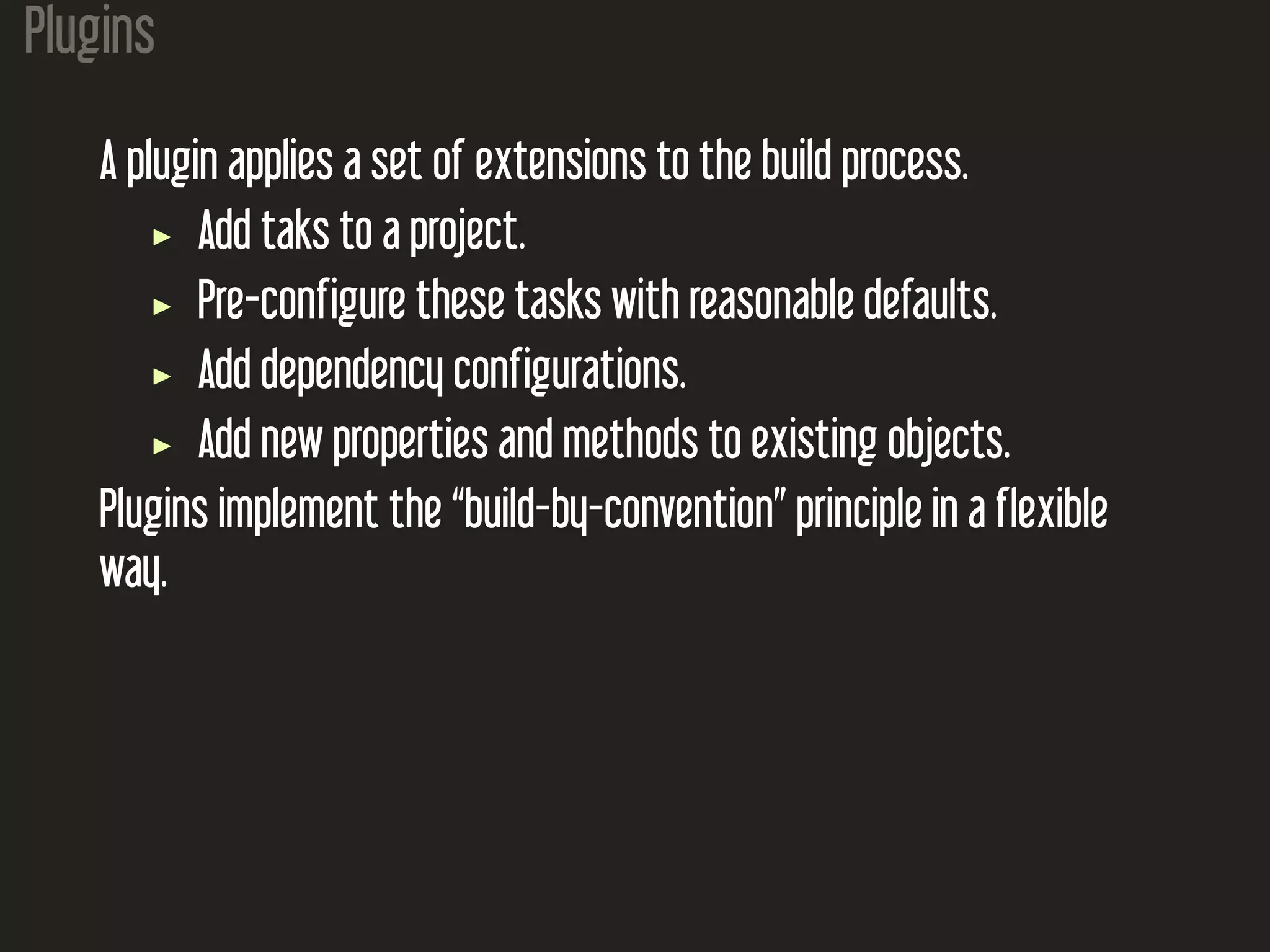
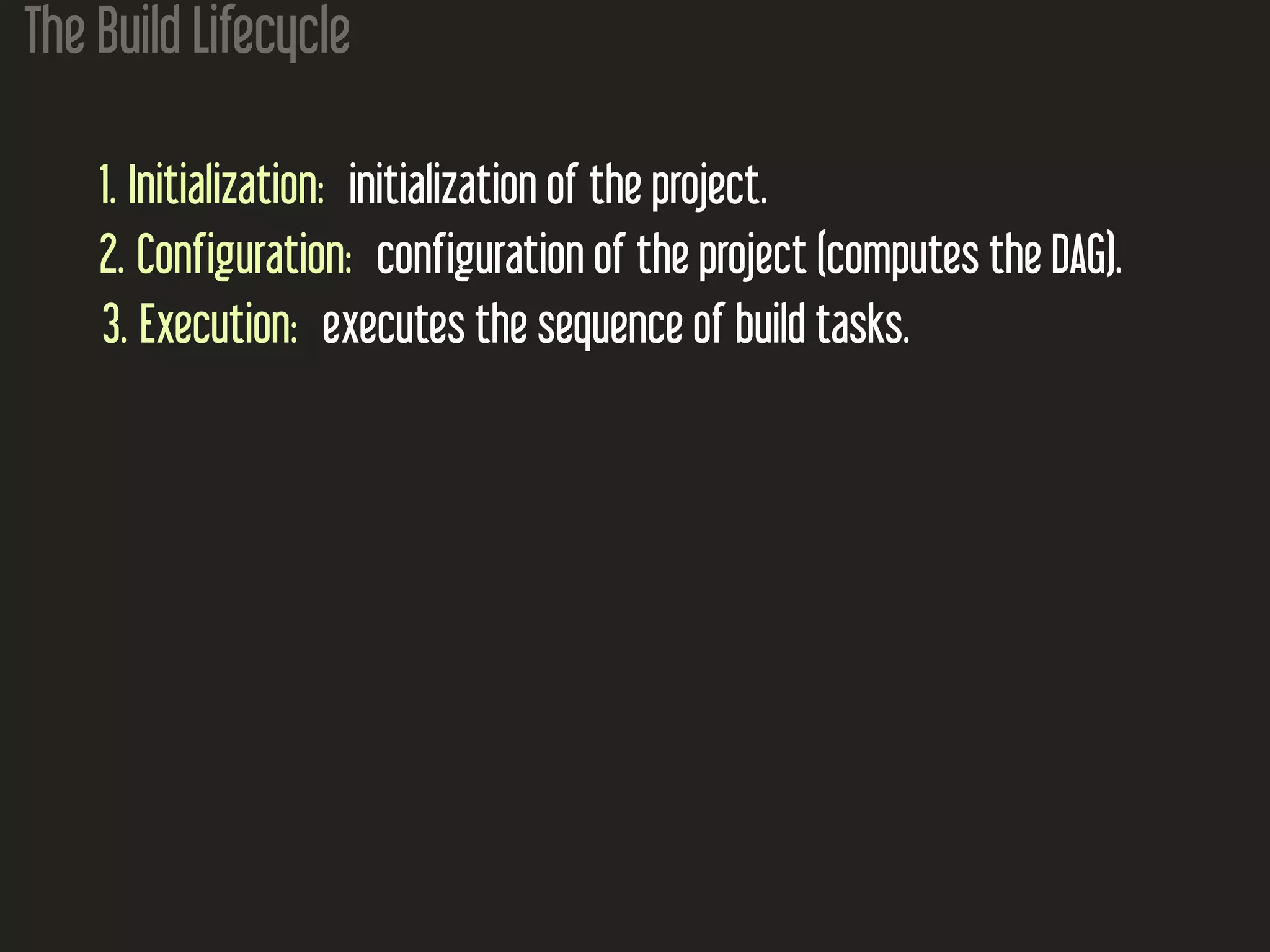
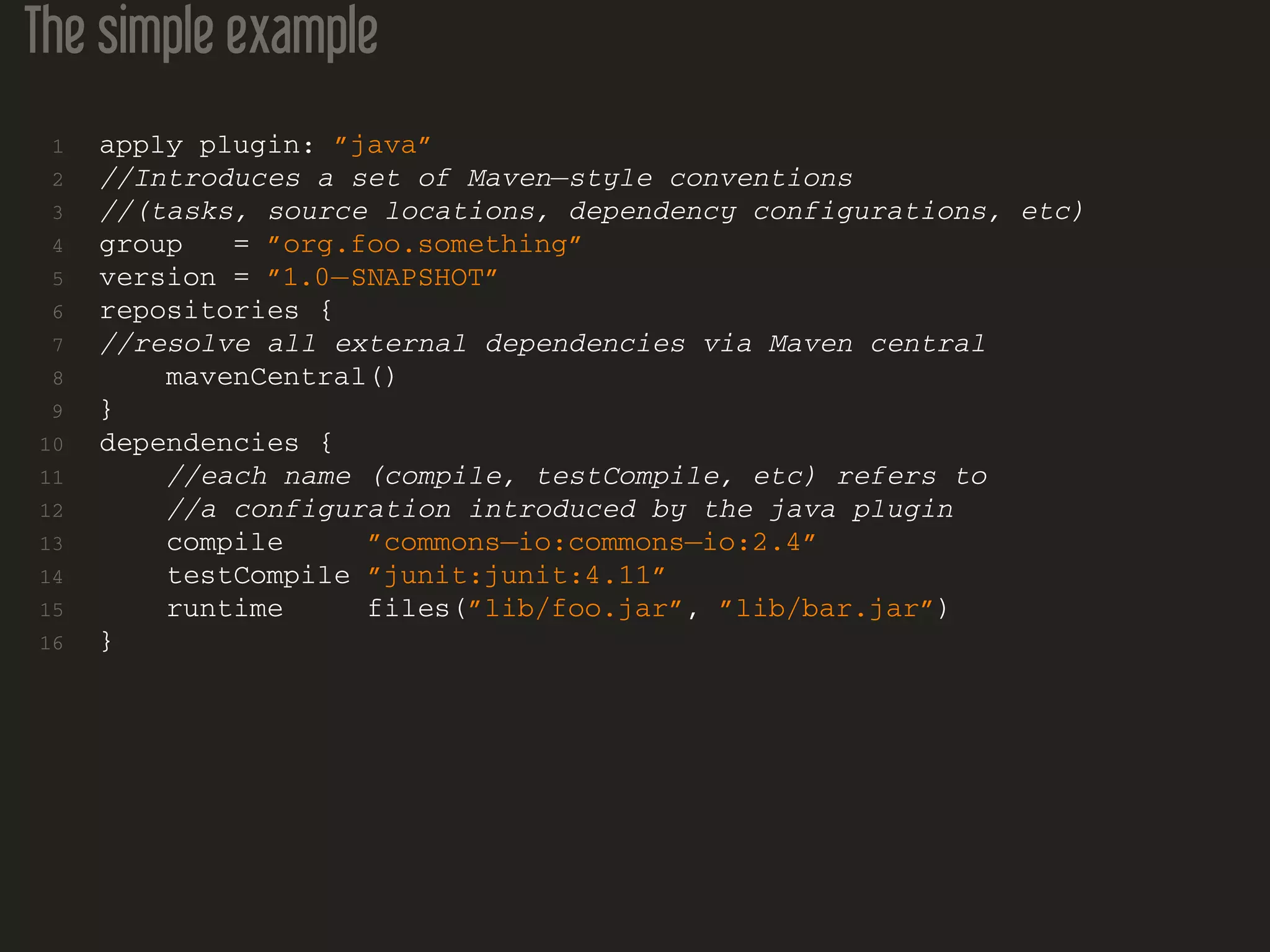
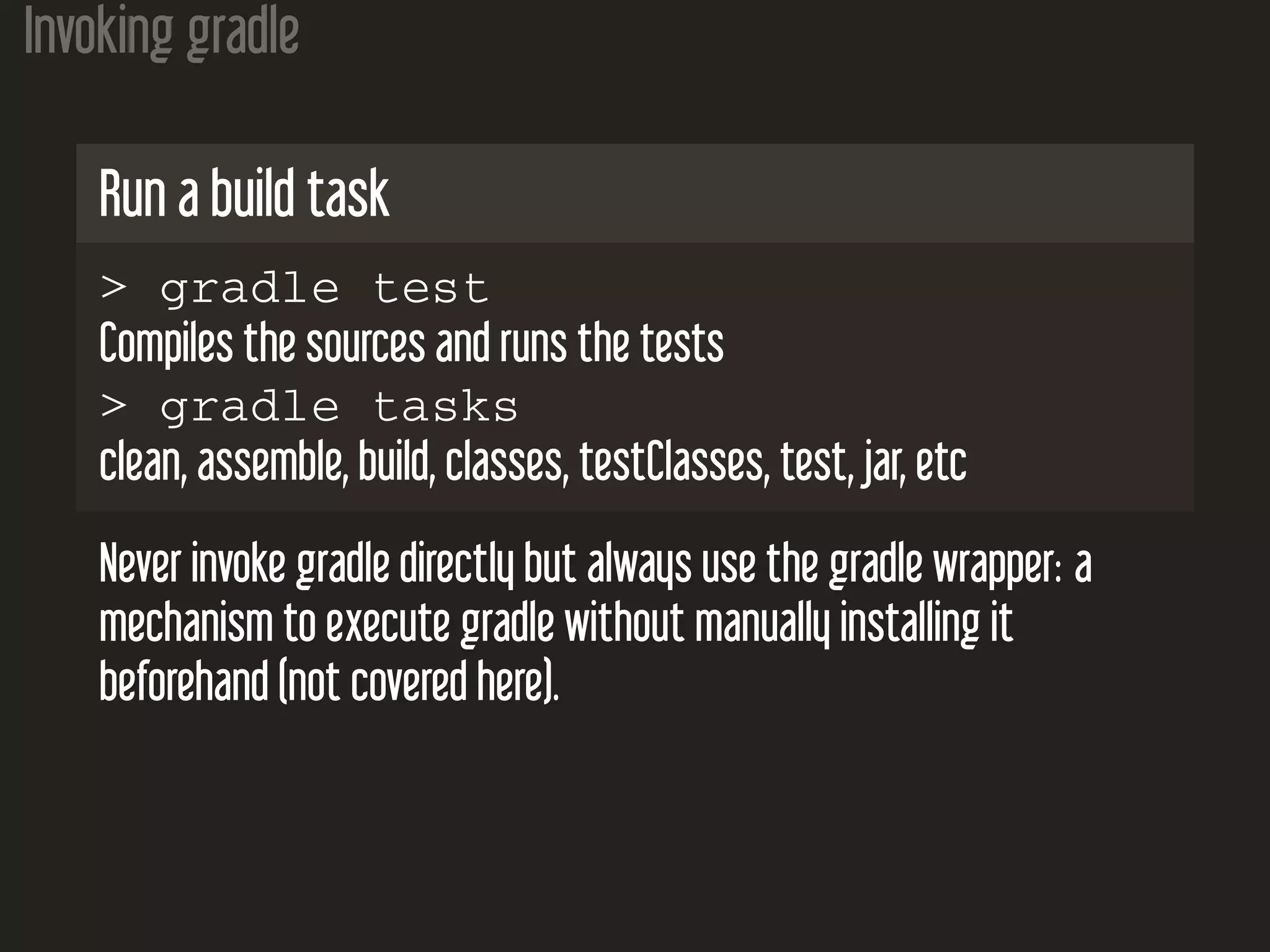
![A more complex example
Ant integration, custom tasks
1 apply plugin:’java’
2 task generateFiles(type: JavaExec) {
3 main = ’some.class.name’
4 classpath = sourceSets.main.runtimeClasspath
5 args = [ projectDir, ’path/to/gen/files’ ]
6 }
7 test {
8 dependsOn generateFiles
9 doLast {
10 ant.copy(toDir:’build/test−classes’){
11 fileset dir:’path/to/gen/files’
12 }
13 }
14 }
15 import org.apache.commons.io.FileUtils
16 clean.doFirst {
17 FileUtils.deleteQuietly(new File(’path/to/gen/files’))
18 }](https://image.slidesharecdn.com/gradleforjavadevelopers-160403102018/75/An-Introduction-to-Gradle-for-Java-Developers-21-2048.jpg)

![Let’s have a closer look
1 //apply the java plugin as before
2 apply plugin:’java’
3 //introduce a new task (that invokes a java process)
4 task generateFiles(type: JavaExec) {
5 main = ’some.class.name’
6 classpath = sourceSets.main.runtimeClasspath
7 args = [ projectDir, ’path/to/gen/files’ ]
8 }
9 //customize the test task
10 test {
11 dependsOn generateFiles
12 doLast {
13 ant.copy(toDir:’build/test−classes’){
14 fileset dir:’path/to/gen/files’
15 }
16 }
17 }
18 //import a class required by this build script
19 //some necessary classpath definitions are not shown for brevity
20 import org.apache.commons.io.FileUtils
21 //customize the clean task
22 clean.doFirst {
23 FileUtils.deleteQuietly(new File(’path/to/gen/files’))
24 }](https://image.slidesharecdn.com/gradleforjavadevelopers-160403102018/75/An-Introduction-to-Gradle-for-Java-Developers-23-2048.jpg)

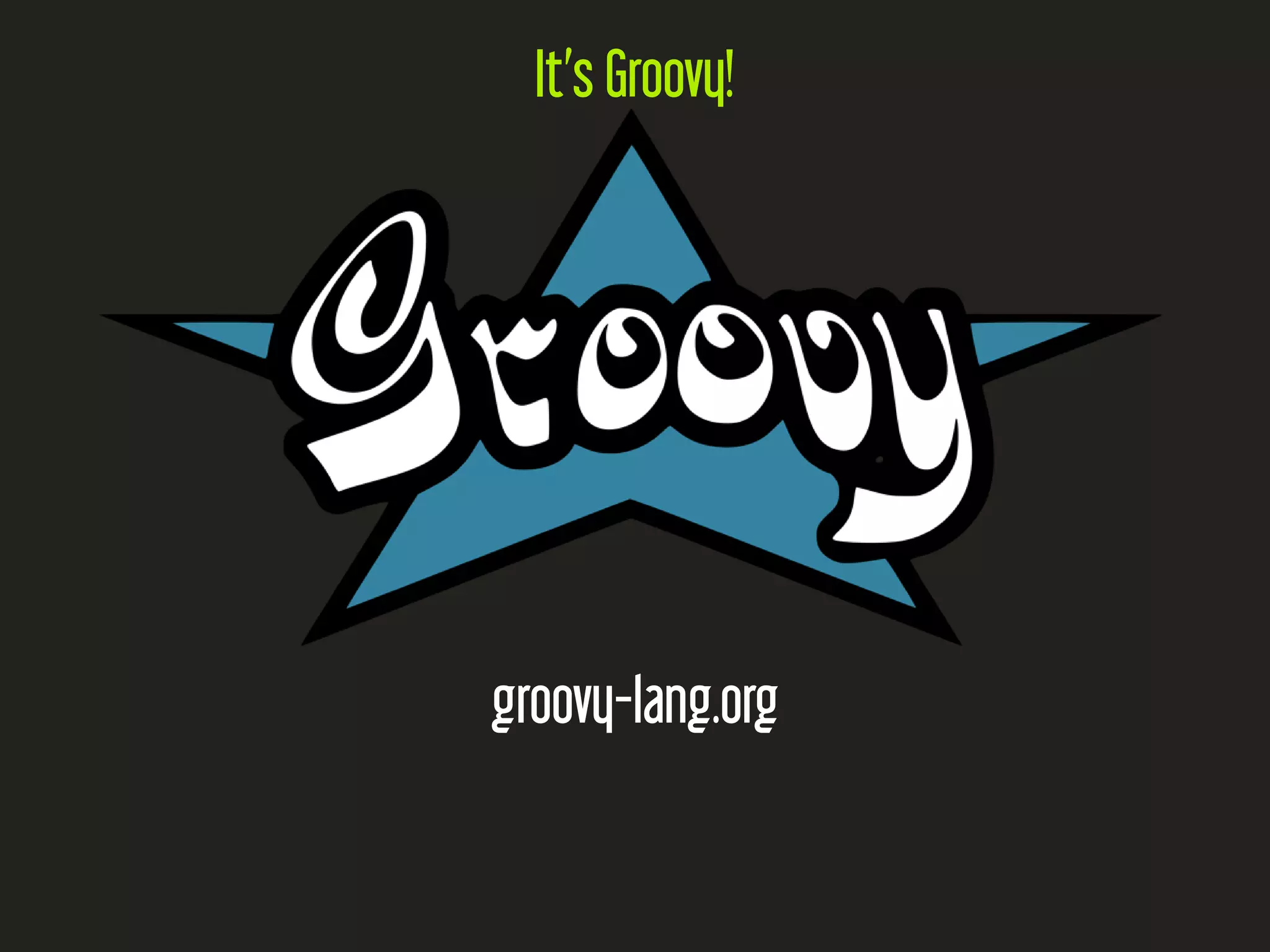

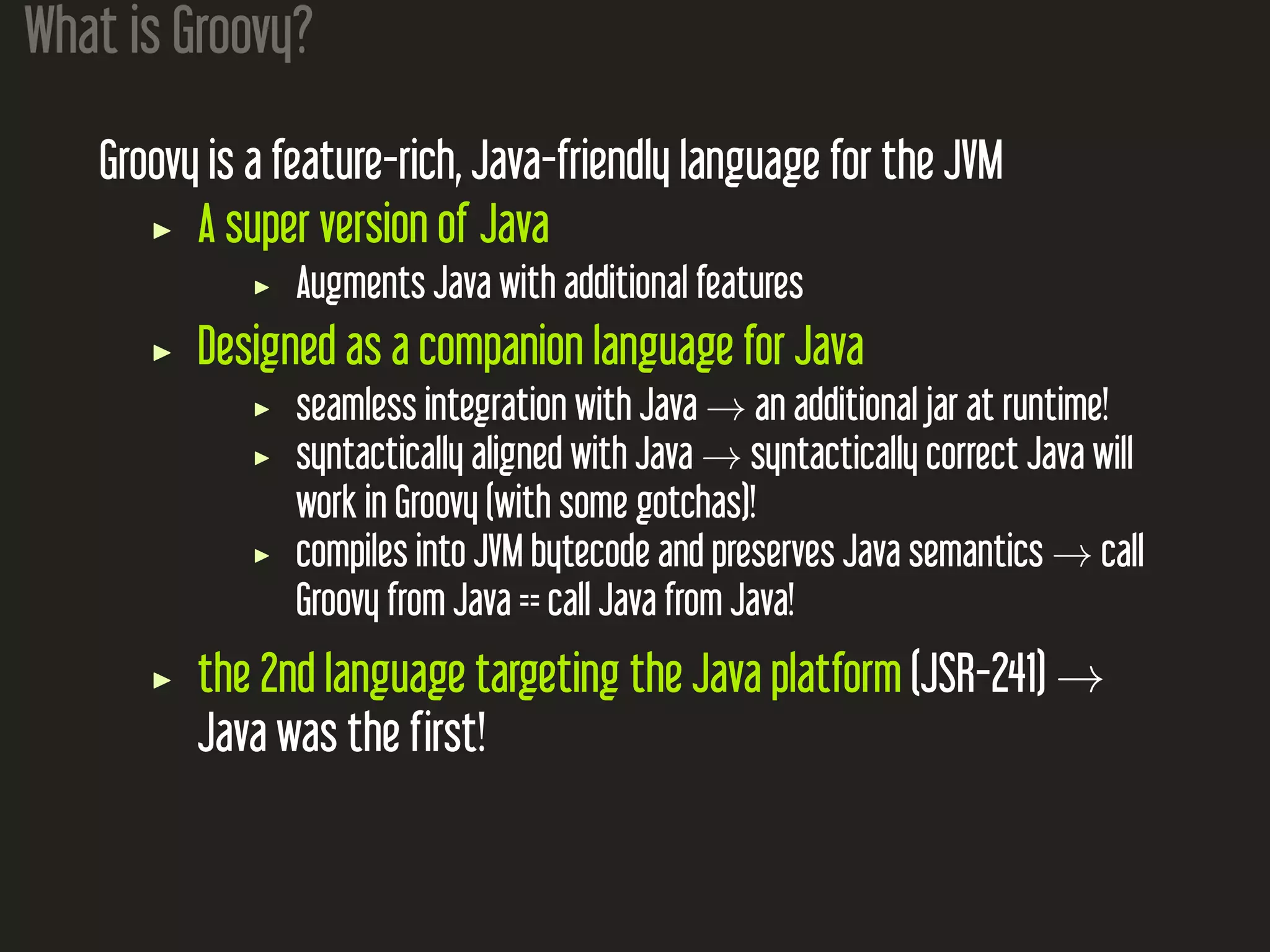
![Groovy Scripts
Java
1 public class Booh {
2 public static void main(String[] args) {
3 System.out.println(”Booh booh”);
4 }
5 }
Compile and run it.
Groovy
1 println(”Booh booh”)
Run it directy.](https://image.slidesharecdn.com/gradleforjavadevelopers-160403102018/75/An-Introduction-to-Gradle-for-Java-Developers-28-2048.jpg)
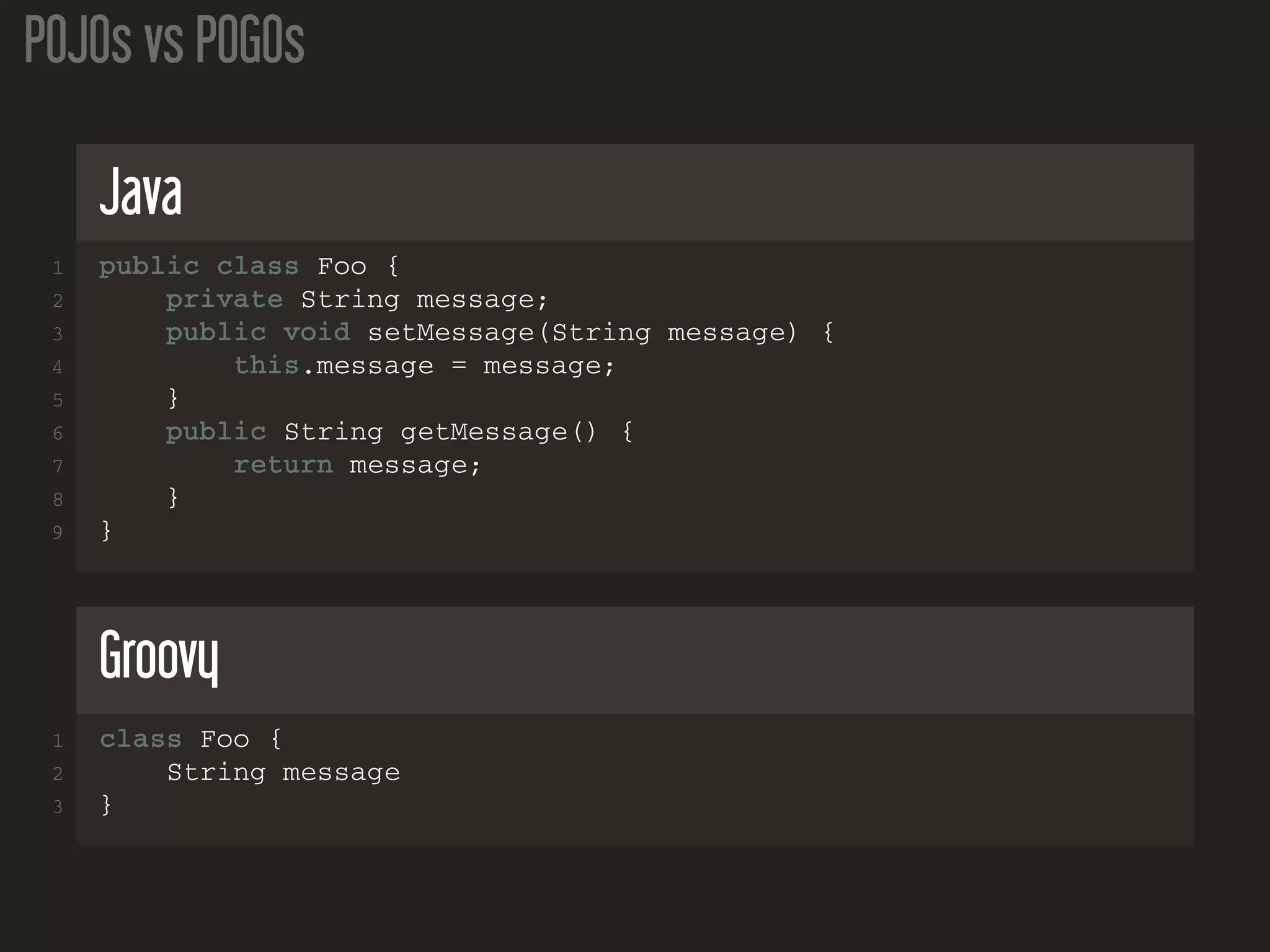
![Groovy Map Syntax
Java
1 Map<String, String> pairs = new HashMap();
2 pairs.put(”one”, ”1”);
3 pairs.put(”two”, ”2”);
Groovy
1 Map<String, String> pairs = [one:’1’, two:”2”]](https://image.slidesharecdn.com/gradleforjavadevelopers-160403102018/75/An-Introduction-to-Gradle-for-Java-Developers-30-2048.jpg)
![Groovy Operator Overloading
1 import java.util.concurrent.*
2 class Tasks {
3 List<Callable> taskList = []
4 void execute() {
5 for(Callable t: taskList) {
6 t.run()
7 }
8 }
9 void leftShift(Tasks tasks) {
10 taskList.addAll(tasks.taskList)
11 }
12 }
13 Tasks t1 = new Tasks()
14 ...
15 Tasks t2 = new Tasks()
16 ...
17 t1 << t2](https://image.slidesharecdn.com/gradleforjavadevelopers-160403102018/75/An-Introduction-to-Gradle-for-Java-Developers-31-2048.jpg)
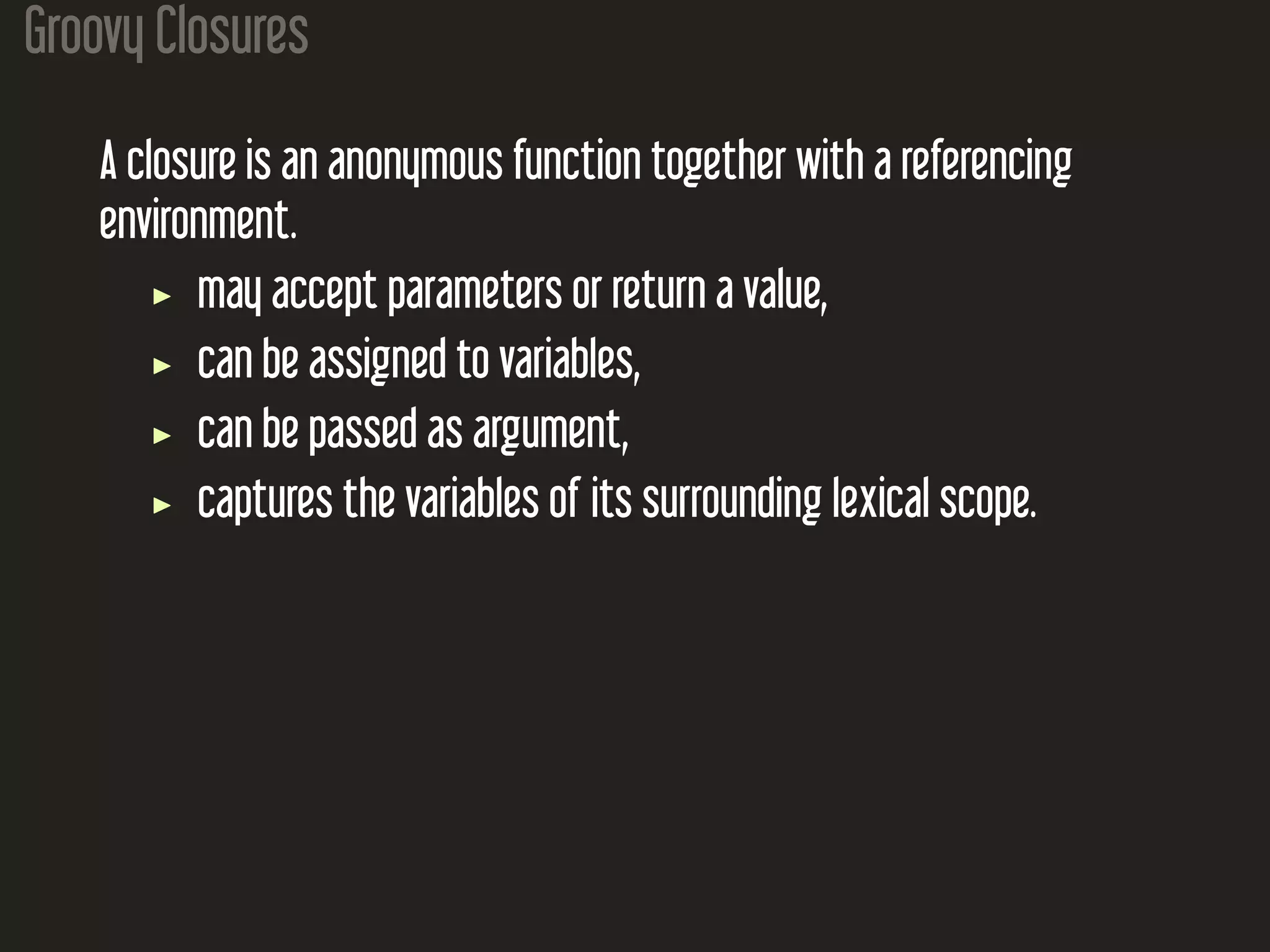
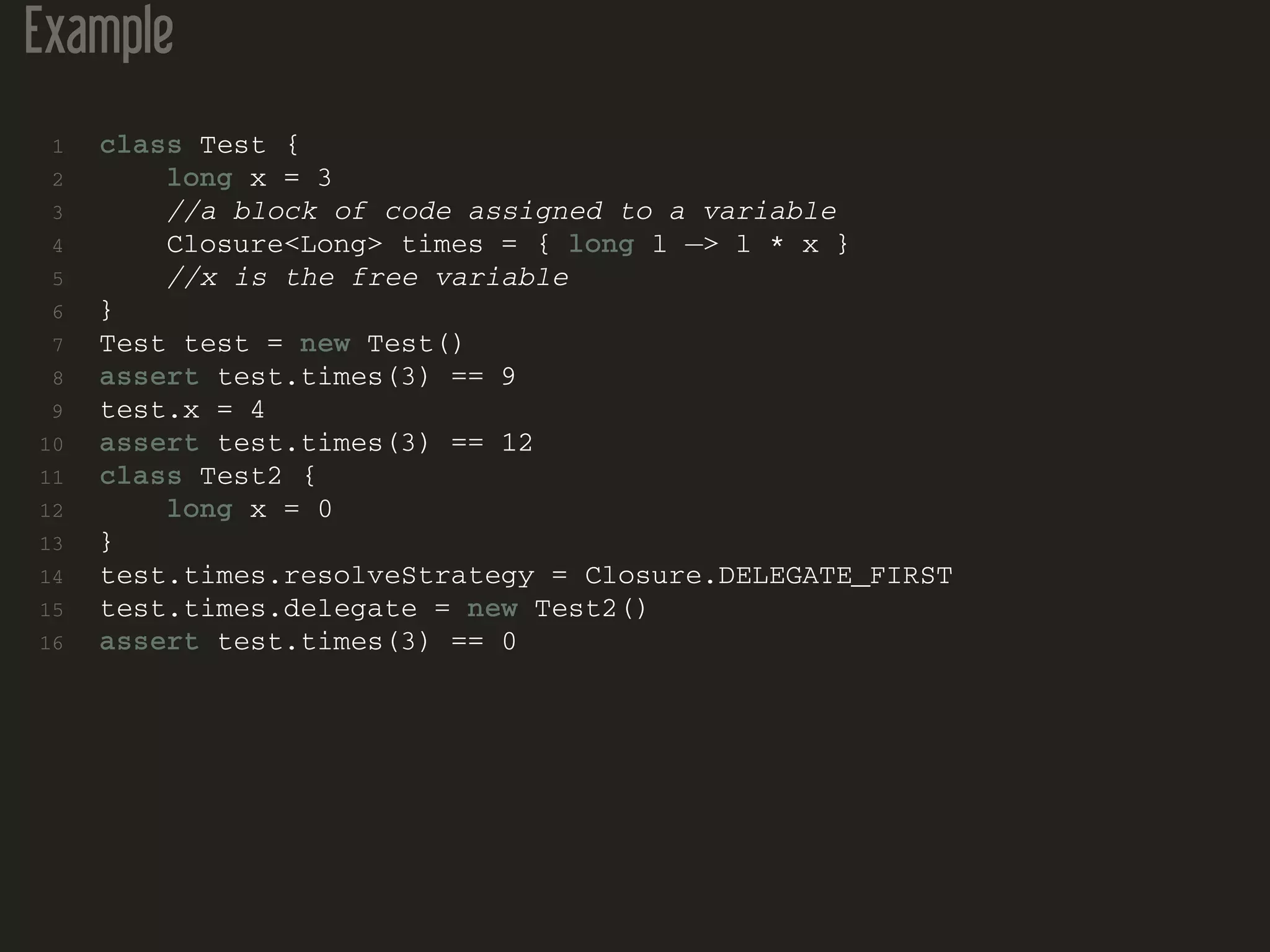
![Groovy method invocation syntax
1 //omit parentheses
2 println(”booh booh”)
3 println ”booh booh”
4 method ”one”, 2
5 //omit map’s braces
6 method([one:1, two: 2])
7 method(one:1, two:2)
8 method one:1, two:2
9 //The closure as last argument pattern
10 Closure clos = { int x, int y −> x + y }
11 method(”one”, 2, clos)
12 method ”one”, 2, clos
13 method(”one”, 2) { int x, int y −>
14 x + y
15 }](https://image.slidesharecdn.com/gradleforjavadevelopers-160403102018/75/An-Introduction-to-Gradle-for-Java-Developers-34-2048.jpg)
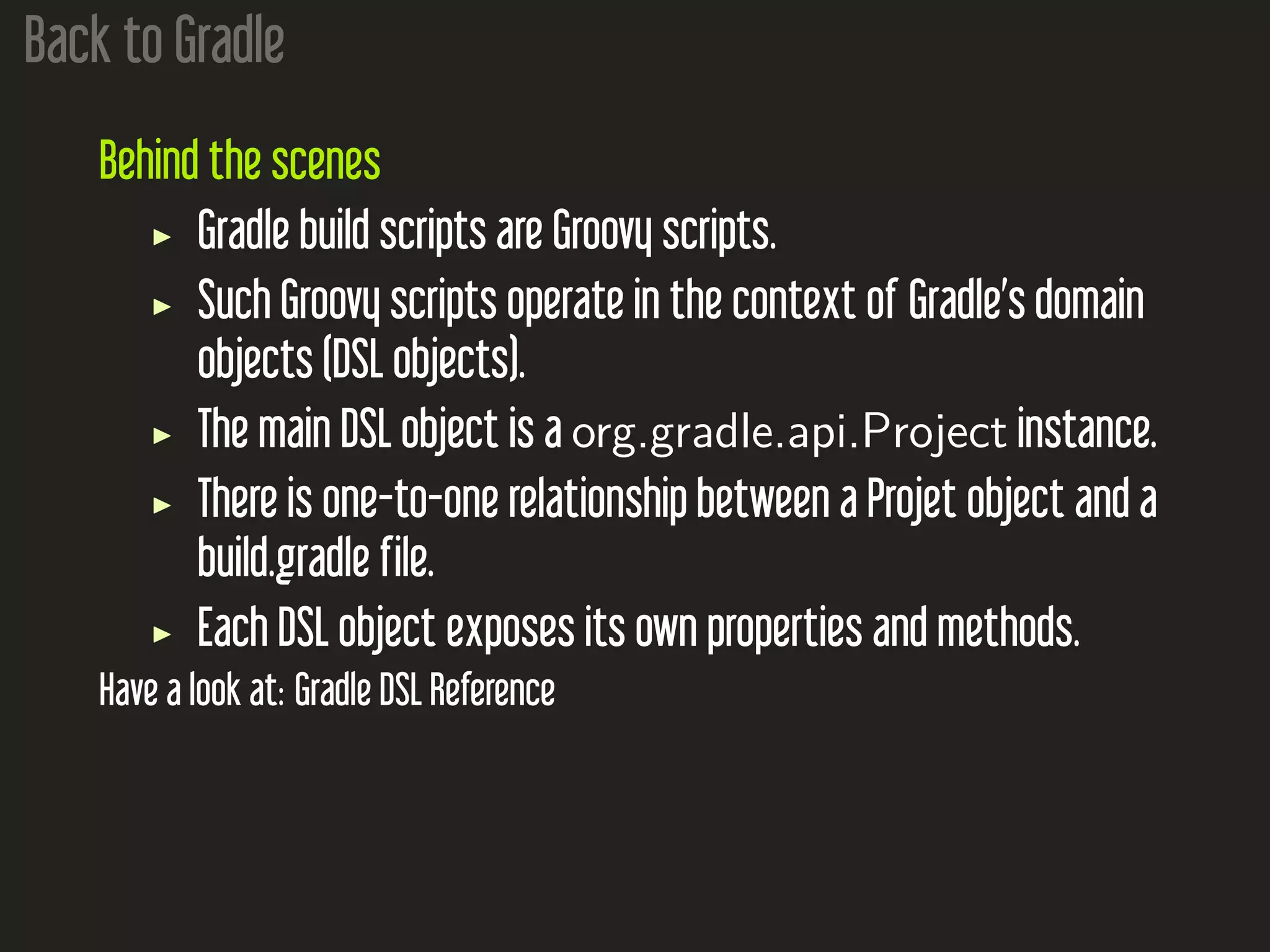
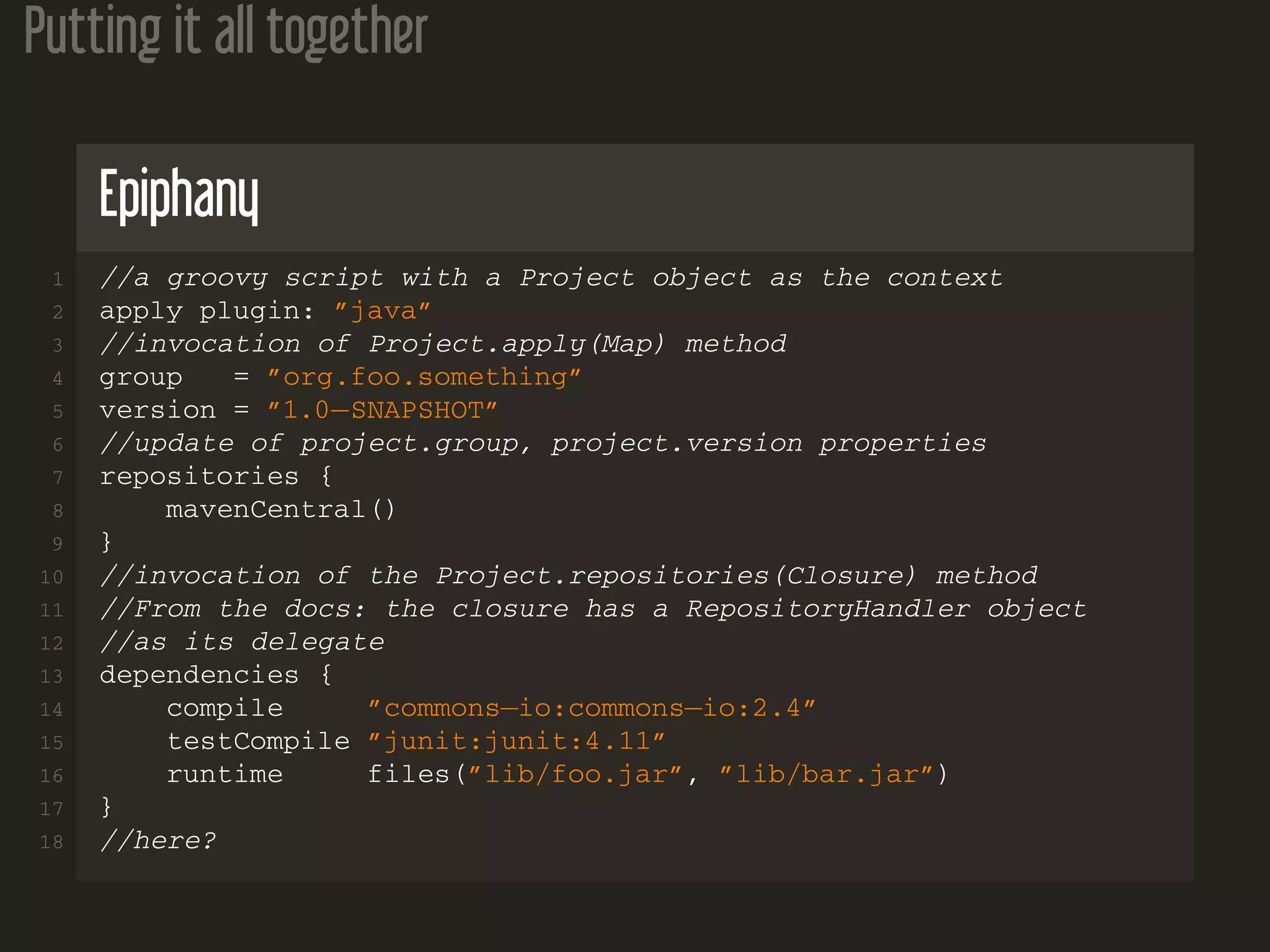
![Quiz
And here?
1 apply plugin:’java’
2 task generateFiles(type: JavaExec) {
3 main = ’some.class.name’
4 classpath = sourceSets.main.runtimeClasspath
5 args = [ projectDir, ’path/to/gen/files’ ]
6 }
7 test {
8 dependsOn generateFiles
9 doLast {
10 ant.copy(toDir:’build/test−classes’){
11 fileset dir:’path/to/gen/files’
12 }
13 }
14 }
15 import org.apache.commons.io.FileUtils
16 clean.doFirst {
17 FileUtils.deleteQuietly(new File(’path/to/gen/files’))
18 }](https://image.slidesharecdn.com/gradleforjavadevelopers-160403102018/75/An-Introduction-to-Gradle-for-Java-Developers-37-2048.jpg)
